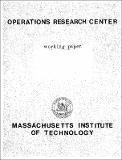| dc.description.abstract | This paper addresses a problem common to many government agencies--trying to specify a regulatory policy that is in some sense best for a given situation. Such questions demand the consideration of multiple conflicting objectives, non-repeatable uncertainties, costs and benefits accruing to various individuals, businesses, and organizations, and effects which extend far into the future. Here a systematic approach--known as decision analysis--appropriate for analyzing such problems, is illustrated. The specific problem involves determining the maximum legal sulfur content of fuels burned in New York City. From the point of view of a city administrator, seven major objectives are identified for this problem. These include physical and psychological health effects on residents, economic consequences to both residents and the City, and political implications. Measures of effectiveness are specified for each objective, and the possible consequences of lowering the legal sulfur content of fuels from one to 0. 37 percent in terms of these measures of effectiveness are assessed. Finally, the impact of this application of decision analysis are described. | en_US |
